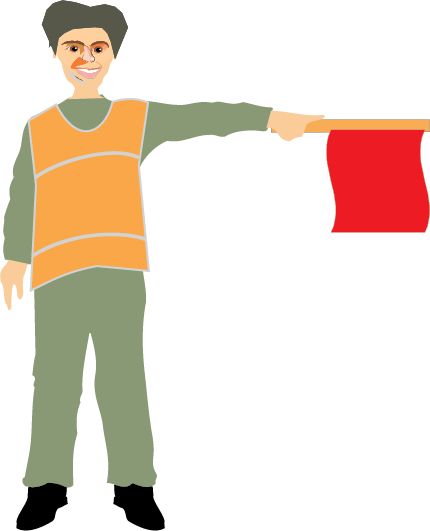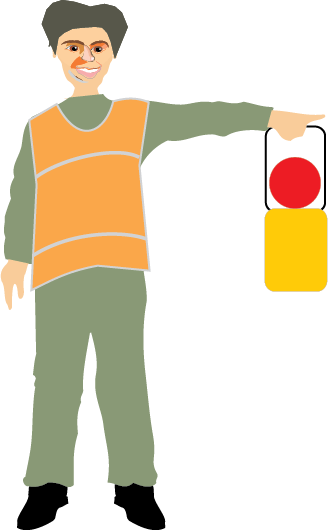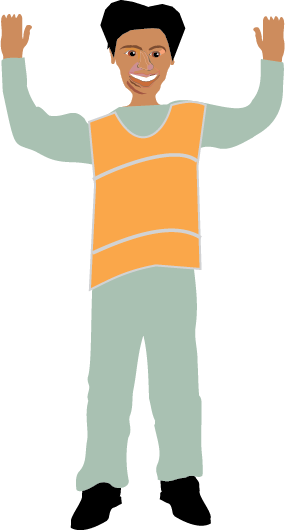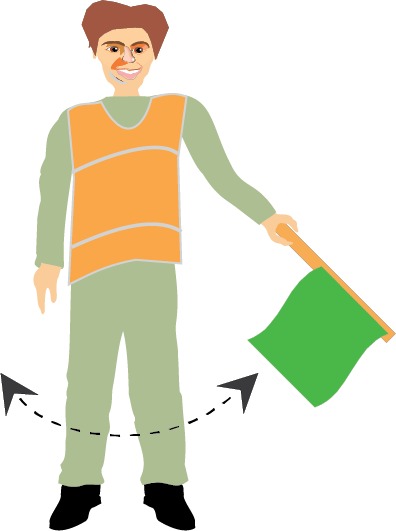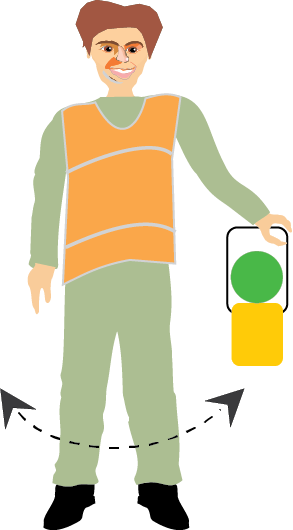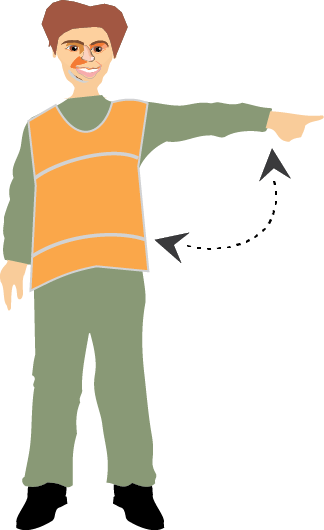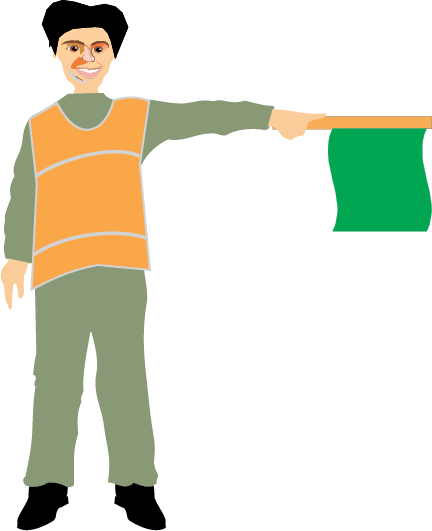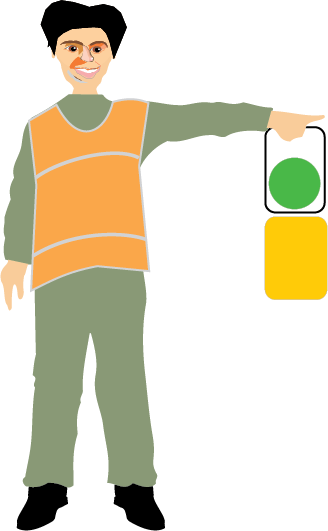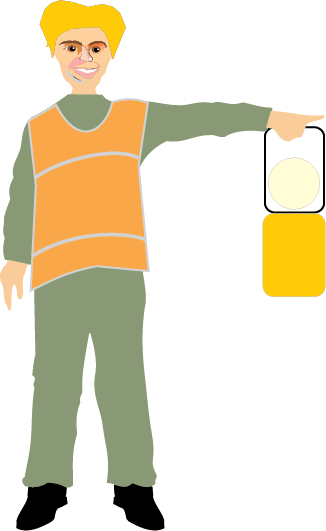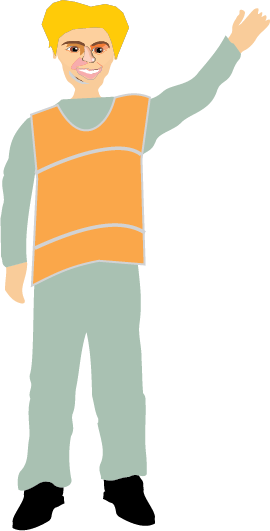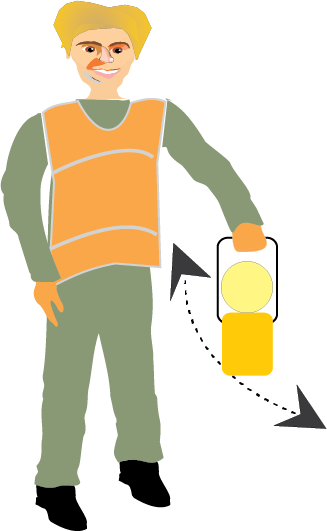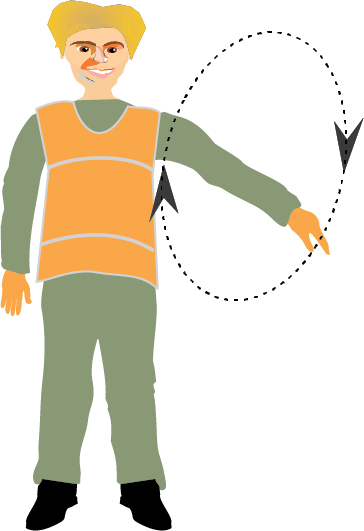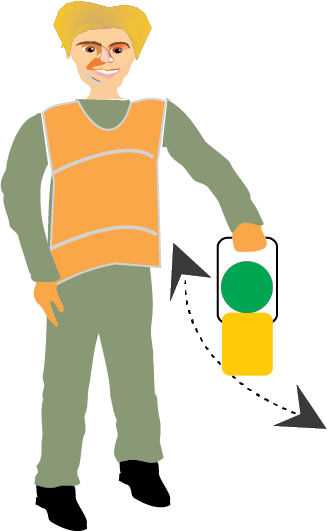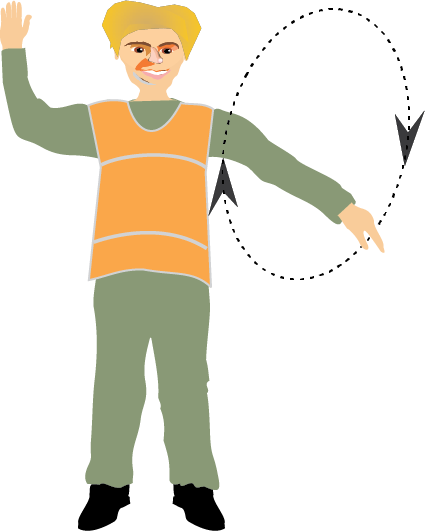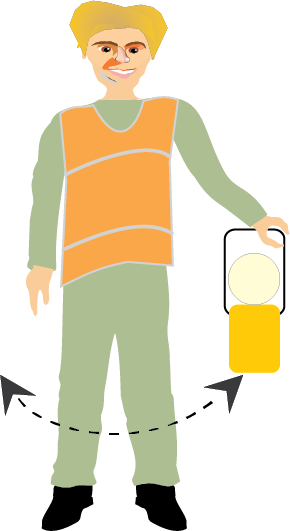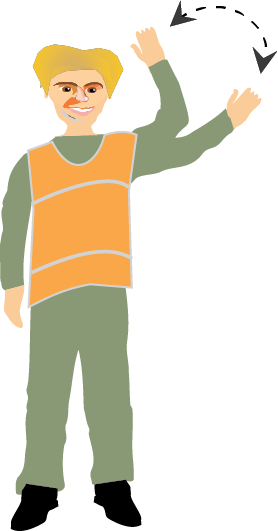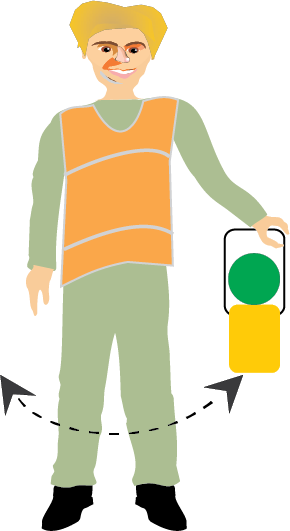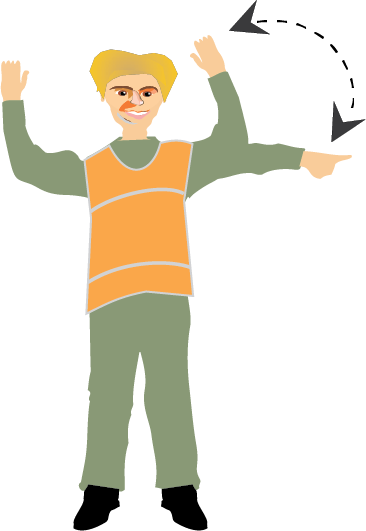Description
This document describes the requirements for giving and responding to handsignals.
Not what you are looking for? See more NGE Rules
Purpose
To prescribe the rules for giving and responding to handsignals used in the Network.
Principle
Giving handsignals
Handsignals must be given:
- in a clear and timely manner, and
- so that they will be received and acted upon only by those who are being signalled.
A Handsignaller must:
- be in or have access to a safe place, and
- be in clear view of those who are being signalled, and
- as required, have effective communication with Signallers or Protection Officers.
Responding to handsignals
If the meaning of a handsignal is not understood, Drivers and Track Vehicle Operators must stop to find out the meaning.
Drivers and Track Vehicle Operators must:
- obey handsignals, and
- acknowledge handsignals other than shunting handsignals.
Handsignalling
Handsignals must be given using:
- flags or hands during daylight, and
- lights during darkness and low visibility .
A handsignal must be continued:
- for the PROCEED and PROCEED AT CAUTION handsignal, until the cab of the leading rail vehicle has passed the Handsignaller, and
- for STOP handsignals, until the rail traffic has stopped.
If at a signal, a Handsignaller must:
- be able to see whether the signal is at STOP, and
- if rail traffic is required to stop, give a STOP handsignal until rail traffic has stopped.
If the signal being held at STOP clears, the Handsignaller must:
- tell the Signaller to set the signal at STOP, and
- tell the Protection Officer, if provided.
A Handsignaller must stand well away from signals if:
- rail traffic is not required to stop, or
- not signalling at a signal.
STOP handsignals
Drivers and Track Vehicle Operators must stop their trains or track vehicles if they, or other crew members, receive a STOP handsignal given by:
- a red flag, or
- a red light, or
- both hands held high.
ALL CLEAR handsignals
Drivers or Track Vehicle Operators must sound the whistle to acknowledge an ALL CLEAR handsignal given by:
- a white light, or
- one hand held high.
DANGER handsignals
Drivers or Track Vehicle Operators must stop their trains or track vehicles immediately if they, or other crew members, receive a DANGER handsignal given by vigorous waving of:
- arms, or
- a flag, or
- a light.
General handsignals
The following diagrams show the handsignals that must be used in the Network.
When a PROCEED AT CAUTION handsignal:
- is given by an inner Handsignaller protecting a worksite, Drivers or Track Vehicle Operators must, unless otherwise advised by that Handsignaller, not exceed a maximum speed of 25km/h until the rail traffic has passed the worksite limits, or
- is given by other Qualified Workers, Drivers or Track Vehicle Operators must proceed at restricted speed.
Shunting handsignals
Shunting handsignals must be given as necessary until the end of the planned movement.
